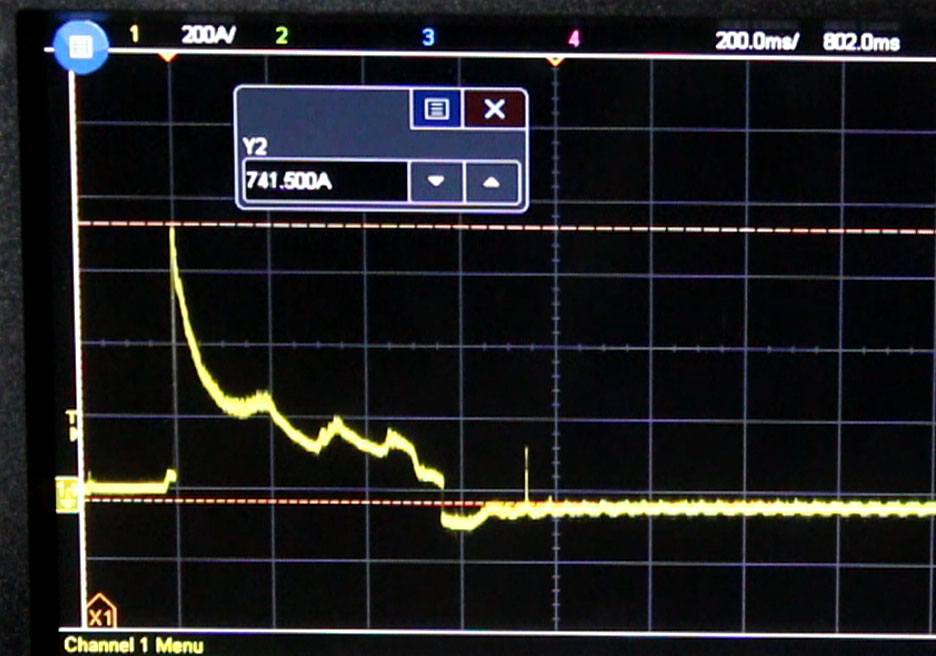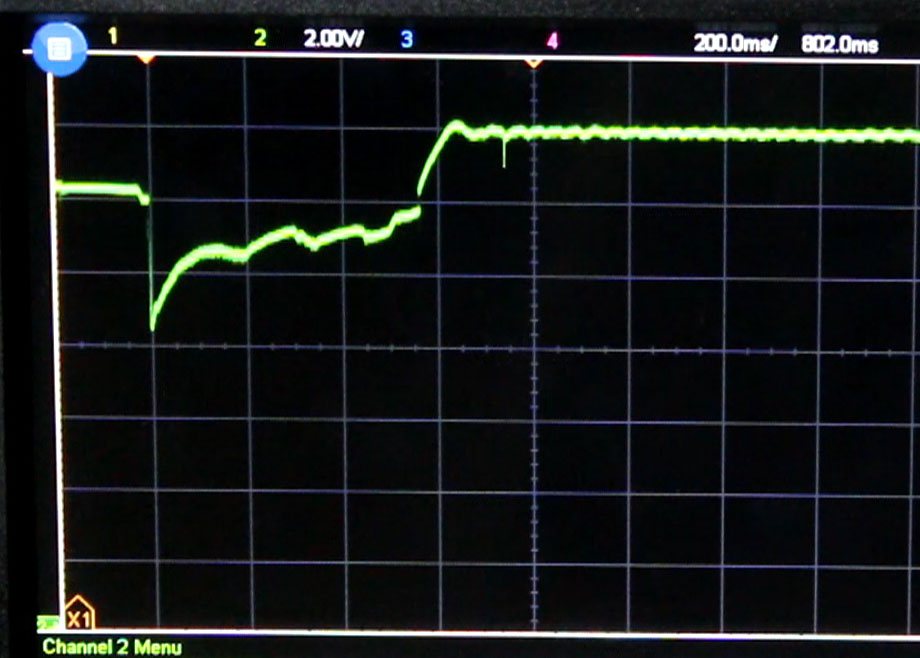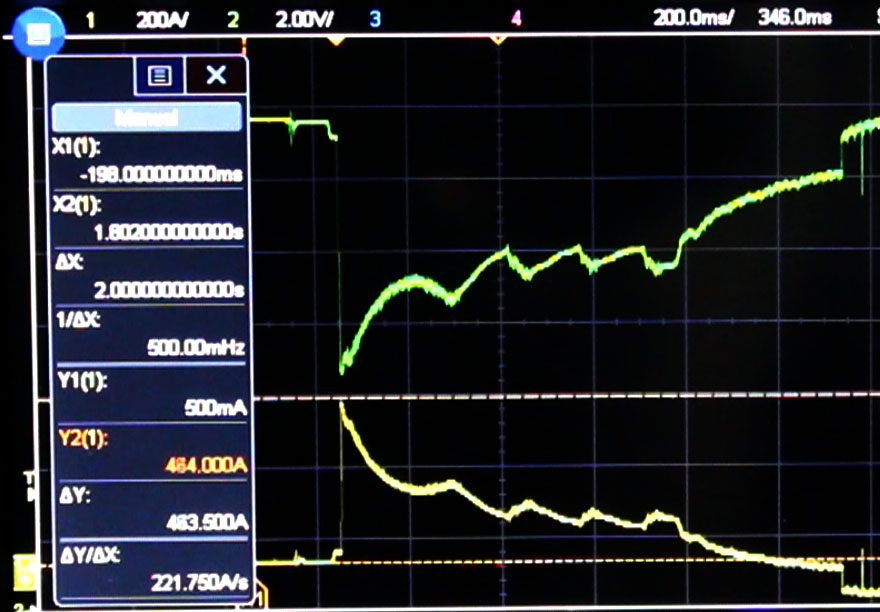Can super capacitors (supercap) alone jump start a car:
But of course they can, if they are rated properly of course. If you want more detail on what supercaps are, you can read this Wiki Page. But in general these especial capacitors have huge amounts of capacity compared to other types of capacitors. They are the bridge between electrolytic capacitors and batteries. At much smaller size, they can store much more electrical charge. The supercaps I used are Eaton XV3560-2R7407-R, which are 400F, 2.7V, 3.2mOhm which can deliver 220A peak at 15 degrees temperature rise. Well I drew more from them and I’m not sorry about it!
Their downside is that majority of them are rated for 2.7V, which is pretty small. One has to put more of them in series in order to get higher voltage rating. But that ends up reducing the total capacitance of the battery. As we know the total capacitance of series capacitors is:

When all capacitors are equal, if we have 6 capacitors for example, the total capacitance would be C/6.
Now to crank a car we need a high voltage capacitor. With 6 supercaps we get a maximum of 16.2V. You may say we could remove one capacitor to get 13.5V total to use in place of a 12V car battery. But as also shown in the video when car is charging the capacitor, the voltage is usually regulated to 14V or sometimes higher. So the more margin the batter.
Now cranking a car takes a lot of current as seen in the plot below. Initially as the crank motor is not running, the only thing holding the motor current back is the motor coil resistance which is generally very small especially for these motors (their inductance is very small). So the current jumps to maximum which in this case is around 740A.

A typical car crank current
As the crank motor starts spinning, the back EMF (voltage generated on the motor coils when turning) picks up and reduces the current into the motor. So the motor current drops to 200A and goes lower. Those ripples in current are due to the change in motor speed as it tries to turn the engine, which is also audible. As soon as the engine turns on, it turns the alternator and charges the battery. This is when the current reverses back into the battery which is around 40A.
The picture below is the voltage of battery when cranking the motor. The battery has some internal resistance which results in voltage drop when current is drown from it. As seen below the voltage almost drops 4V and we know the current was 740A. This means the battery series resistance is around 5.4mOhm. Of course this is a charged battery resistance and will be smaller if the battery is not charged well.

Battery voltage when cranking
Also from the plot above we can calculate the coil resistance of the crank motor, which is around 8.4V on the battery divided by 740A current, or around 11.4mOhm.
Now the supercaps I used have an ESR (Equivalent Series Resistance) of 3.2mOhm each. With 6 of them in series we will have around 6 x 3.2 = 19.2mOhm resistance. This means that when we crank with capacitors, the voltage across the capacitor will drop much more and they provide a smaller in-rush current. This would result in the motor turning slower. This is what we observe in the video as well, and the plot below shows how the crank current is smaller.

Cranking voltage and current with supercaps
The crank current is around 460A and the voltage drops by around 7V from 13.6V. This means the capacitors have 7/460 = 15.2mOhm resistance which is better than expected.
As you see from the plots, while the battery could start the car in less than 600mS, the supercaps started the car in closer to 800mS, which means as expected the crank motor is turning slower. But that is good enough to start the car. Right after the car starts, the capacitors charge and are ready for another crank.
There are two issues with supercaps:
- They have large leakage current, around 1mA for my supercaps, which will drain them fully in about 13 days.
- My supercaps are only good for one crank per charge, meaning if you open the doors and in-cabin lights or other devices turn on, their voltage drops and there won’t be enough juice to crank.
Of course you can get much higher capacity supercaps good for multiple cranking tries before car starts and recharges the capacitors.
Also in many cases when they want to use super capacitors in place of car batteries, they also include a low power battery parallel to the supercaps. The battery can provide the 1mA leakage current for very long period of time. Also if one crank didn’t turn the car on, you can wait for the battery to charge the supercaps for another try.
